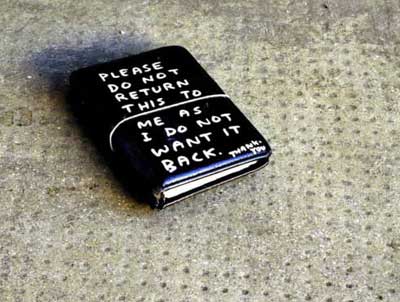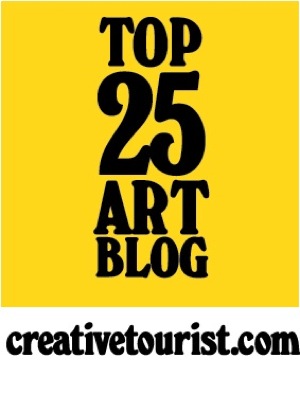I was interested to read Charles Leadbeater’s new essay for
Cornerhouse, The Art of With, earlier this week. Taking Leadbeater's influential notion of "We-Think" - a new collaborative, participatory way of working rooted in Web 2.0- and applying it to both the arts sector and contemporary arts practice,
The Art of With asserts that we are increasingly moving away from a notion of art that is predominantly “for” or "to" towards a new and inspiring 21st century “art of with” that turns spectators into producers, breaks down conventional hierarchies and promotes sharing and openness. Leadbeater suggests that artists and arts institutions should be “critically and creatively engaging” with this new culture, “exploring, probing, questioning, challenging it, opening up possibilities within it that commerce will not entertain,” citing works such as Martin Creed’s Work 850, Anthony Gormley’s plans for the 4th Plinth and Jeremy Deller’s Battle of Orgreave as examples of collaborative artworks.
Leadbeter’s essay makes for intriguing and often inspiring reading, but what especially interested me was his use of the term “avant-garde.” This term recurs numerous times throughout the text, with Leadbeter positing the participatory “art of with” as a new, 21st century avant-garde in opposition to that of the 20th century, which he defines as an avant-garde characterised by the principles of “separate and shock.” But what does Leadbeater really mean when he talks about a new “avant-garde”? He doesn’t clearly define what he means at any point, but it’s certainly a courageous choice of terminology, raising a whole number of interesting questions.
The term “avant-garde” is often used in a very general, conversational sense to denote more or less anything that’s considered new, innovative or experimental. But in the academic territory that Leadbeater seems to be negotiating in this essay given his references to thinkers and theorists such as Walter Benjamin and Guy Debord, it is often used with a rather more precise (though contested) definition. There are whole books dedicated to what we mean when we talk about "the avant-garde," perhaps the most significant being Peter Bürger’s influential Marxist analysis of the character and function of avant-garde art,
Theory of the Avant-Garde, which remains central to our understanding of this loaded term.
To vulgarise his argument hugely, Bürger asserts that the avant-garde artwork is that which represents a protest against the nature of art as an institution within alienated bourgeois society, challenging the conventional notion of art as autonomous, elevated or rarified, detached from everyday existence. For Bürger, an artwork such as Duchamp’s
Fountain can be considered truly avant-garde because it mounts an attack on the status of art, through challenging the conventional modes of its production and reception, revealing the institution of art to be ideologically determined, and using a variety of strategies to attempt to integrate art into everyday life itself. Bürger describes how the avant-garde artworks of the Dada and Surrealist movements reflect the desire to dissolve the boundaries between art and life, integrating art into everyday existence and bringing about a state in which “praxis is aesthetic and art is practical.”
So much for the theory bit. Now, many people have challenged and criticised Bürger’s definition: some feel it is too limited or dogmatic, others that it is just too pessimistic - after all, Bürger essentially asserts that post-Dada and Surrealism, 20th century artwork has been merely “neo-avant-garde” - a repetition of the failed gestures of the earlier avant-garde movements - and denies the possibility of any subsequent avant-garde. He’s also been criticised by those such as Manchester University’s own Amelia Jones, who have identified the failure of his arguments to consider how works such as
Fountain have subsequently been re-appropriated by the institution of art, ironically becoming representations of the very notions of “artistic genius” that Dada sought to challenge. But whether or not we “buy” Bürger’s definition of avant-gardism, or the various others set out by historians, critics and theorists, all this is at stake when Leadbeater employs the term “avant-garde” in
The Art of With.
Read from this angle, Leadbeater’s notion of the 20th century avant-garde as being characterised by the desire to reinforce the separation of art and life, and by the idea of art as elevated and autonomous, seems a rather odd one. Like Adrian Slatcher (whose response to
The Art of With you can read on his blog
here) I would absolutely question the idea that the avant-garde could ever be considered non-collaborative. For me, it might be more interesting to interpret the participatory and collaborative artworks Leadbeater references as attempts to re-invigorate the ideas of the 20th century avant-garde movements such as Dada, Surrealism and Situationism: perhaps the "art of with” could in fact be better configured as not the opposition to but as the
continuation of their project in its attempt to integrate art more closely into the fabric of everyday life.
But can we really accept Leadbeater's assertion that the "art of with" has the potential to become a 21st century avant-garde? It may be new, innovative and challenging but within this specific art theoretical framework, avant-garde it probably isn't. But in the end, does it really matter? As with so many things, all this really comes down to is semantics. Yet all the same, it would have been interesting to see this essay take a closer look at the term Leadbeater uses to structure his account - its complexity, its contentiousness, its multiple definitions - as part of this otherwise engaging and pertinent essay about the possibilities for a 21st century art practice characterised by collaboration, a new participatory “art of with”.
If you’d like to read more, you can check out the draft essay
here, comment on the text paragraph by paragraph
here or join the wiki
here. There will be also be
seminar on
The Art of With at Cornerhouse in June.
 I'm currently intrigued by the buzz around The Cutting Room Experiment. This unique new project is “an attempt to create the world’s biggest user generated event in the world.” Taking place right here in Manchester on 20 June, it’s going to transform Cutting Room, a new public space in Ancoats, into a unique events space for a one-day, one-off “mass participation event” which the audience themselves will design and shape.
I'm currently intrigued by the buzz around The Cutting Room Experiment. This unique new project is “an attempt to create the world’s biggest user generated event in the world.” Taking place right here in Manchester on 20 June, it’s going to transform Cutting Room, a new public space in Ancoats, into a unique events space for a one-day, one-off “mass participation event” which the audience themselves will design and shape.
















